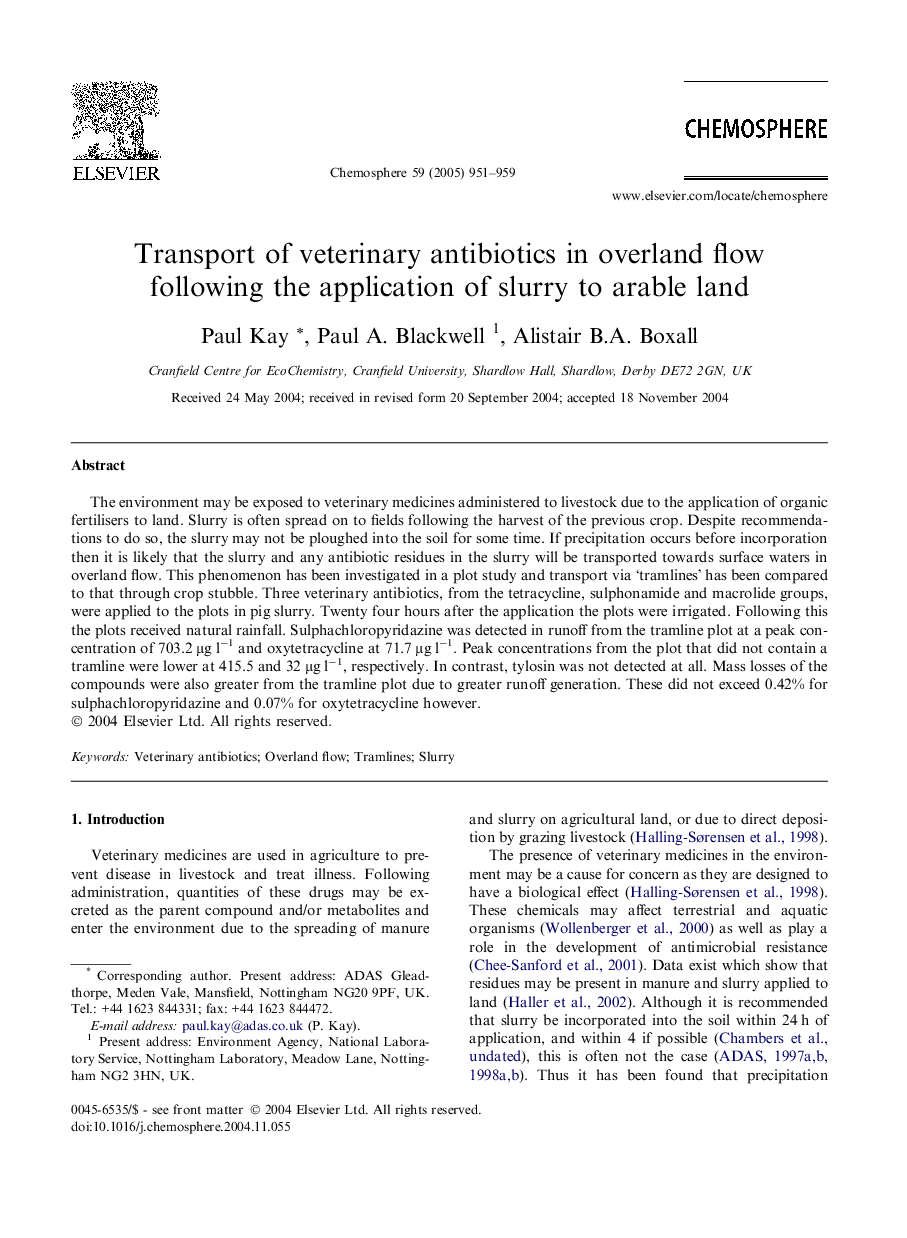| Article ID | Journal | Published Year | Pages | File Type |
|---|---|---|---|---|
| 9451873 | Chemosphere | 2005 | 9 Pages |
Abstract
The environment may be exposed to veterinary medicines administered to livestock due to the application of organic fertilisers to land. Slurry is often spread on to fields following the harvest of the previous crop. Despite recommendations to do so, the slurry may not be ploughed into the soil for some time. If precipitation occurs before incorporation then it is likely that the slurry and any antibiotic residues in the slurry will be transported towards surface waters in overland flow. This phenomenon has been investigated in a plot study and transport via 'tramlines' has been compared to that through crop stubble. Three veterinary antibiotics, from the tetracycline, sulphonamide and macrolide groups, were applied to the plots in pig slurry. Twenty four hours after the application the plots were irrigated. Following this the plots received natural rainfall. Sulphachloropyridazine was detected in runoff from the tramline plot at a peak concentration of 703.2 μg lâ1 and oxytetracycline at 71.7 μg lâ1. Peak concentrations from the plot that did not contain a tramline were lower at 415.5 and 32 μg lâ1, respectively. In contrast, tylosin was not detected at all. Mass losses of the compounds were also greater from the tramline plot due to greater runoff generation. These did not exceed 0.42% for sulphachloropyridazine and 0.07% for oxytetracycline however.
Related Topics
Life Sciences
Environmental Science
Environmental Chemistry
Authors
Paul Kay, Paul A. Blackwell, Alistair B.A. Boxall,
